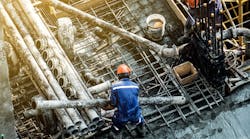Latest from Construction Data
Sponsored
WASHINGTON, DC — The construction industry added 110,000 jobs in March, according to an Associated Builders and Contractors analysis of data released today by the U.S. Bureau of Labor Statistics. The industry has added 931,000 jobs since April 2020, recovering 83.6% of the jobs lost during earlier stages of the COVID-19 pandemic.
The construction unemployment rate fell to 8.6% in March from 9.6% in February, but it is still 1.7 percentage points higher than in March 2020. Unemployment across all industries declined from 6.2% in February to 6.0% in March.
A significant percentage of the job growth was registered in nonresidential construction, which added 73,100 jobs in March. The number of nonresidential specialty trade contractor positions expanded by 38,200, while the nonresidential building segment added 7,600 positions.
“Here comes the tsunami of economic and employment growth across America,” said ABC Chief Economist Anirban Basu. “With more stimulus on the way, the United States may end up growing faster than China this year, which would be the first time that occurred in decades.
“Much of the stimulus to come will directly affect construction, particularly the heavy and civil engineering segment,” said Basu. “While any infrastructure stimulus should be geared toward projects generating the highest rates of return and open to bids by all competent contractors, the sheer volume of money flowing into the economy is set to create massive forward momentum for the balance of 2021 and likely through 2022. Contractor optimism seems to reflect this building momentum, according to the latest ABC Construction Confidence Index.
“As always, there are risks,” said Basu. “The federal government is borrowing heavily to stimulate the economy. Inflationary pressures are likely to become more apparent during the months ahead, translating into rising interest rates. Already, key construction inputs such as softwood lumber and diesel fuel have experienced sharp price increases over the course of the pandemic. At some point in the future, the U.S. economy could see not only faltering stimulus, a massive national debt and higher costs of capital, but also higher taxes. That does not represent a promising recipe for contractor health. For now, however, it is all systems go.”
Visit abc.org/economics for the Construction Backlog Indicator and Construction Confidence Index, plus analysis of spending, employment, GDP and the Producer Price Index.


